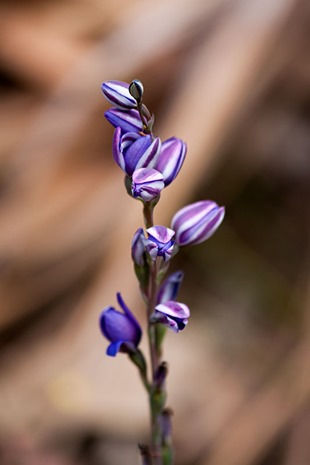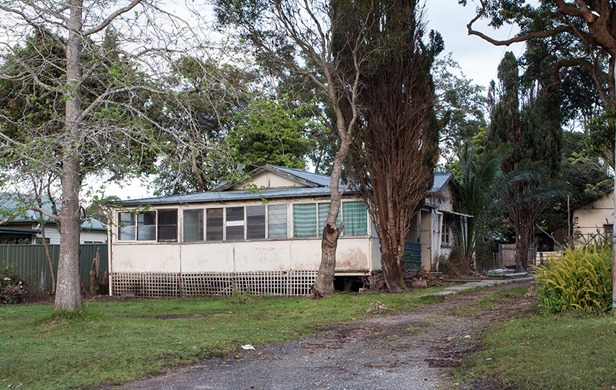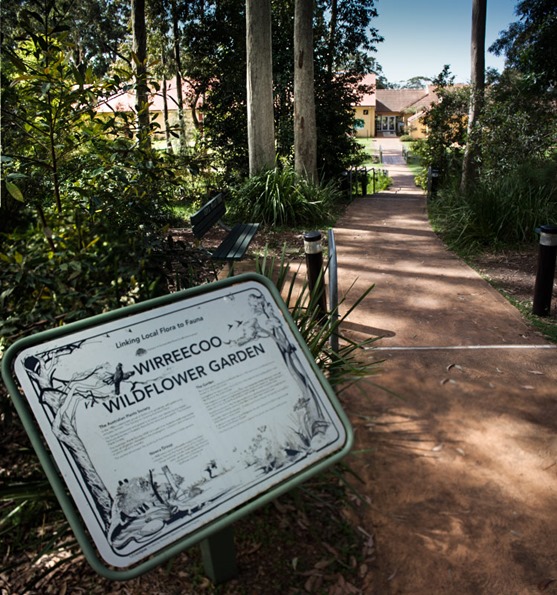 |
30 September 2015
A SOUTH COAST DISTRICT.
28 September 2015
Trouble - Jervis Bay - 1924
| She appeared a pitiful picture, suggestive of a ship whose heart had been broken. |
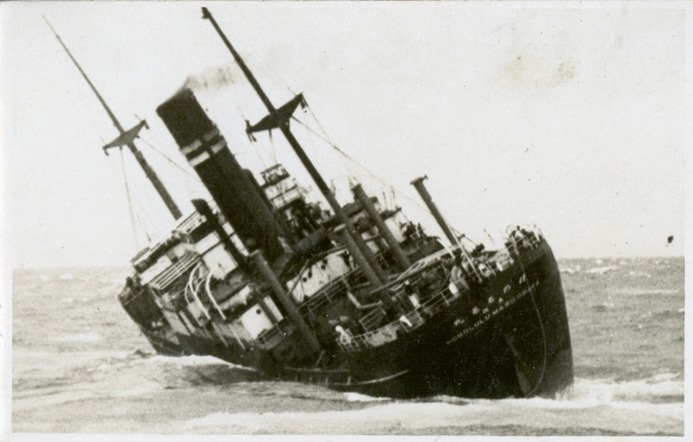 Ref : State Library of NSW. Ref : State Library of NSW. |
|
|
 The large 1750 ton Japanese steamer Honolulu Maru, in command of Captain Kamataka, with 63 men and officers were bound from Melbourne to Sydney carrying a cargo of 1400 tons of zinc plates, stowed in four holds was caught in a fearful storm south east of Jervis Bay. |
|
April 4th 1924 - The gale hit so fast and with such force it caused the zinc plates to shift, the ship developed a list of 40 degrees. Examination of the cargo determined there was no chance of shifting the cargo in the horrendous conditions. Deluged by overwhelming seas, she found herself in a perilous state. The crew worked frantically to secure the ship, the wireless operator put out a distress SOS call which was eventually picked up by the British Cruisers Dauntless. The Warship H.M.S Dragon on her way from Hobart was dispatched immediately to relieve the Dauntless. The Dragon was nearly fully extended, she has a top speed of 29 knots, and was furrowing some of the worst seas the squadron had ever experienced at 24 knots, she covered 120 miles in 6 hours to get to the scene. The Dragon had it’s own problems during the journey, mountainous seas washed right over her, appearing to almost swallow her, 5 men were nearly washed overboard and it was only a miracle that they were saved. Attempts were made to get a hawser between the vessels, one attempt saw the line get caught under the propeller of the Honolulu Maru. Another line became enmeshed in the bows of the Japanese steamer, and the men on the Dragon speak with pride of the spectacle of one of the Japanese seamen crawling over the side of the ship with a rope around his waist and freeing the line. The Captain and the crew of the Honolulu Maru had expectations their ship would turn turtle at any time. Both vessels were shipping mountainous seas, with each roll the men were nearly up to their knees in water The Dragon kept vigil all Friday night over the steamer which was wallowing like some broken thing in treacherous seas. The Dragon swept the steamer continually with it's great searchlights and stood by prepared for any emergency. As soon as the situation was relayed to the authorities the Sydney tugs Champion and Heroic left port in the full force of the gale, even old sailors didn't think they had a dog's chance of getting through the monstrous seas with blinding squalls. One skipper of many years of life at sea said he never saw such seas and weather. But he expressed his faith as such. "Good boats those tugs, long since proven staunch and true, and their skippers and crew are splendid seamen" April 5th. The Champion picked up the Dragon and the Honolulu Maru off Jervis Bay. To add to the already dangerous situation, it was found with such a list the Honolulu Maru would not steer The decision was made to attempt to get a hawser to the strained vessel to initiate a tow, to attempt this in the horrendous condition was a daunting task, with great risk and difficulty they managed to secure the hawser. At midnight on Saturday the Champion managed to tow her battered charge to a safe anchorage inside Jervis Bay. Although she was now inside Jervis Bay she was still in a venerable position. Concerned about the sea coming more into the bay, the vessel was moved to a more protected area. The war ship Dragon stood close by. A gang of stevedoring hands was dispatched from Sydney to re-stow the cargo of the Honolulu Maru, she would then be taken to a safer anchorage. Despite the ordeal, on inspection no damage was found to have occurred. |
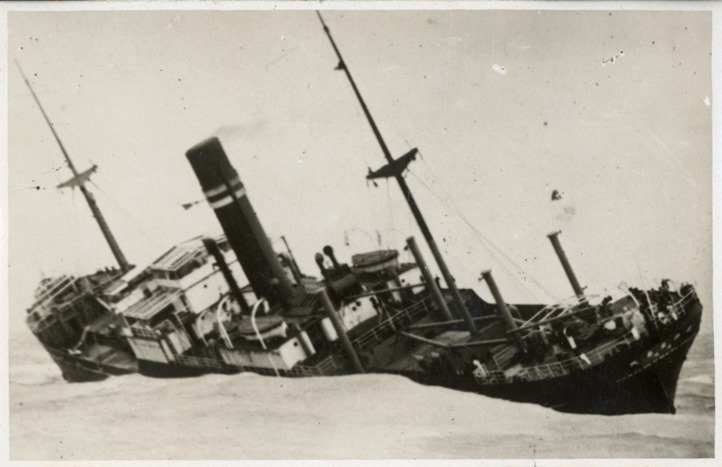 Ref : State Library of NSW. Ref : State Library of NSW. |
24 September 2015
New exhibition starting soon.
| go here for more information - http://www.jervisbaymaritimemuseum.asn.au/what-s-on.html |
| |
Jervis Bay strange morning light
They got “bushed”
Local News 1893
21 September 2015
Jervis Bay -The beach was strewn with dead cattle
| The Argus Thursday 18 June 1908, |
 |
| An attempt to swim some starving Victorian cattle ashore at Jervis Bay ended disastrously, nearly 50 animals being drowned. They were brought by the steamer Wyrallah. The beach was strewn with the carcases of the animals, which were no doubt too weak to reach the shore alive. |
|
|
| The loss of livestock on voyages between ports wasn’t an uncommon occurrence, there are many reports of terrible losses of livestock associated in early coastal travel. |
19 September 2015
Old houses of Huskisson
18 September 2015
Whale Bone and Horn
Impure soaps kill more than intoxicating liquors
17 September 2015
15 September 2015
A tragedy of the sea – 120 miles East of Jervis Bay
| The loss of the Barque Atacama - 13 lives lost. A harrowing ordeal. |
  The scene depicts the forlorn moment the sailors had to abandon the Atacama The scene depicts the forlorn moment the sailors had to abandon the AtacamaTown and Country Journal 1898 |
| The Atacama under the command of Captain Spruit since 1878 principally trading around the Australian coast to California and Puget Sound. |
| Built in 1975 by J.Smitcen – Alblasserdam - Netherlands. Atacama 1298 tons gross Length 194.5ft Breath 40.0 ft Depth. 25.10ft Owner – Messrs Cowlishaw - |
| January 29th - Leaving Newcastle bound for San Diego, the Atacama sailed with favourable light easterly winds and fine weather. Saturday February 5th - The wind changed to a north-north-west, and at 2p.m. suddenly veered to the south, with a fresh breeze. The vessel was all right, and making the usual amount of water. Being a wooden ship, and having been high out of the water for some time, there were naturally crevices that did not close up, but as she went along they soon closed, and we were daily making less water in consequence. The ship was going under easy canvas – three lower topsails and foresail – when the wind flew to south-ward. Sunday, 6th. – The weather was much the same – but the barometer was rapidly falling. At noon we took in the foresail and travelled very easy under the three lower topsails. 8 pm - on inspection 2ft of water was found in the well, the windmill and main pump were continually employed, but failed to decrease the water as expected. The Captain made the decision to return to port if possible. Monday, 7th – 4a.m., the vessel was turned through the wind (wearing ship) and headed for Sydney, some 540 miles distant. The wind was blowing south, with fresh gales. The pumps were kept continuously going. The ship was rolling very badly because of the high seas and the decreasing wind. The foresail and maintop sail were set to help steady her. 9 a.m, The decision was made to try and get up steam on the donkey engine, but no sooner was the fire underway than a heavy sea tumbled on board, tore one of the eye-bolts out of the deck, and the other three out of the framework of the donkey. Thus the whole thing was adrift, it took a round turn and smashed against the port bulwarks. 4 p.m, The donkey was in place and lashed securely. they managed to get up steam, however It broke down after 2 hours of work, and the crew had to fall back to all hands on the pumps. With the main pumps and windmill at work, the water still kept gaining. The wind had shifted to the north-west, making it impossible to make for port. Tuesday, 8th – the ship was found to have run 42 miles in 24 hours, and Sydney was still 420 miles away. The wind had changed to a moderate westerly, and despite all efforts the inflow of water steadily increased. 4 p.m – there was 7ft 6in of water in the hold. 9 p.m – The wind had freshened for the north-west, The barometer showed steady at 28.80, and the water in the well was 8ft. All hands were tired out with the continuous pumping since Sunday. Wednesday, 9th – The men took it in turn for four to go below and 8 at the pumps. The wind was now strong from the north-west. It was decided to provision all there boats and get them ready for launching in case of necessity. 3 p.m – the water was over the coals forward and aft, and the ship was rolling very much. 4 p.m – there was 11 ft of water in the hold, and it was gaining rapidly. 6 p.m – the boats were put out. 7.30 p.m – after sounding the hold, and finding 12ft 6in of water the crew left the ship. 2 a.m - The boats lay near the ship all night, the wind veered to the south-east, by daylight nothing was to be seen of the ship, and the boats made sail for Sydney. There were three boats in all. At starting fine weather prevailed, with easterly winds. Saturday 12th – Observations showed they had made 240 miles. By this stage the boats had separated and were out of sight. By afternoon the wind had increased from the east, and a heavy sea had filled the captains boat, the men had more than they could do to keep her bailed out. 11.05 p.m – The boat turned turtle,” throwing everyone into the water. One of the five. a lad named Allen, 15 years of age, was lying in the bottom of the boat wrapped in a blanket sunk at once and was not seen again. , . The rest clung with great difficulty in the tossing sea to the keel of the boat, but presently another large wave righted the craft, and the men clambered into the water filled boat. Figueroa was the hero of the voyage. The Captain. - “I went down a considerable depth under the water, I did not attempt to swim, for swim I could not”, Boatswain Joseph Figueroa saved my life”. |
 The captain was washed off the keel twice after it had capsized, and out of the boat once after she was righted, going over on the port side and coming up on the starboard side…being rescued on each occasion by Boatswain Figuaro. The captain was washed off the keel twice after it had capsized, and out of the boat once after she was righted, going over on the port side and coming up on the starboard side…being rescued on each occasion by Boatswain Figuaro.Figuaroa lashed the Captain to the boat. Figuaroa – “ I was very tired”, he said: “but all the others were worse than I was”, “I unshipped the rudder and tried with it to splash water out”. |
| Thrilling adventure and cruel privations Sunday 13th – The men were hit by a furious gale, terrific squalls, heavy rain and mountainous seas, which rolled indecently over the small boat – full of water all the time. The conditions of things continued until Wednesday Morning. Tuesday 15th - The men had been in a water filled boat for three days and 18 hours, with nothing either to drink or eat. Captain Spruit - “ I kept 2 buttons in my mouth the whole time on account of the thirst”, “ my god it was an awful time”. The weather finally moderated. Wednesday 16th – Figueroa bailed out the boat and hoisted the sail and steered for shore. He had actually sailed the small boat with the little main sail 220 miles in two days. They saw a distressed ship in the distance (the Industrie) and they made for her, trying to cut her off, so as to get on board. 11.30am – Fendwick’s tug-boat, the Leveret, came up to take the “Industrie” in tow, but seeing the small life boat under sail, Captain Robert Boyce of the Fendwick, headed for them first, taking the survivors on board and providing them with their first food and water since Saturday. It wasn’t possible to hoist the life boat on board the Leveret, so they took her in tow, but during the night she tore her bows out and got adrift. Captain Spruit - “Boatswain Joseph Figueroa was always a good man, and I cannot speak to highly of him”, “ Pinto, another Chillian with us in the boat, was very bad, and would have died, I believe had we not been rescued when we were”. |
 J.Figuaro – J.Pinto - The Sydney Mail. J.Figuaro – J.Pinto - The Sydney Mail. |
| A dogs life at best. Speaking of the Lad Allen, the Captain explained that he was 15 yeas of age, and it was his first voyage, He tried to persuade him not to go the sea, and told his parents it was a dog’s life at the best, and that he was very silly, but he would go, having set his mind on it. Captain Spruit – “He had every confidence in the ship – was, in fact, quite proud of her – and regarded her as a strong, fine vessel. he had been in her two years and a half”. She got strained on her last voyage going around the Cape of Good Hope, but was thoroughly overhauled in Sydney and the captain felt sure she was “a right as nine pence”. Thursday 17th Hundreds of people rush to the Quay to meet the shipwrecked crew. ”The news of the tragedy caused a sensation in Sydney, the news spread like wildfire, and hundreds of people rushed to the Quay, where the tug usually berths, to meet the shipwrecked crew. 11.30am – The tug ranged alongside, Captain Spruit was a well known Sydney ship-master, was recognised on the deck with three others. It needed only a glance to show that they had passed through a terrible experience”. Two boats containing 12 men still missing. On receipt of the news of the disaster the Marine Board took prompt steps to search for the crews of the two missing boats, in case they had successfully weathered the elements. The pilot steamer Captain Cook proceeded at once to search for the boats. The Ajax from Newcastle was also ordered to go in search, and all the coastal look–out stations were advised to keep careful watch for any signs of the unfortunate men. The search proved fruitless and the missing men were never seen again. |
 Robert Sheiner Steward on the Atacama - The Sydney Mail Robert Sheiner Steward on the Atacama - The Sydney Mail |
| A strange Coincidence. With the abandonment of the Atacama, Gertrude Spruit aged 14, a daughter of the captain had a dream, in which she saw the whole scene, down to the smallest details and related it to her mother. so when the father was driven home, the family were not surprised. Another notable thing is that Captain Spruit kept a diary throughout, so that if his body was found the notebook would tell the story of the Atacama. |
 Ships crews were made up of men from all over the world Ships crews were made up of men from all over the world |
| MARINE BOARD INQUIRY During the Marine Board inquiry there was much discussion about the seaworthiness of the Atacama and the responsibility of the owners and Captain for taking an unseaworthy boat to sea risking life and property. Conflicting evidence from the ships surveyors and repairers added to the drama…an article in the Bulletin at the time found the newspaper in the courts fighting a case of libel. |
 |
| Missing boat found
|
 Newcastle Morning Herald and Miners' Advocate - 28 February 1898 Newcastle Morning Herald and Miners' Advocate - 28 February 1898 |
| |



 HMS Dauntless -Ref:
HMS Dauntless -Ref:  H.M.S.Dragon Ref:
H.M.S.Dragon Ref: 




